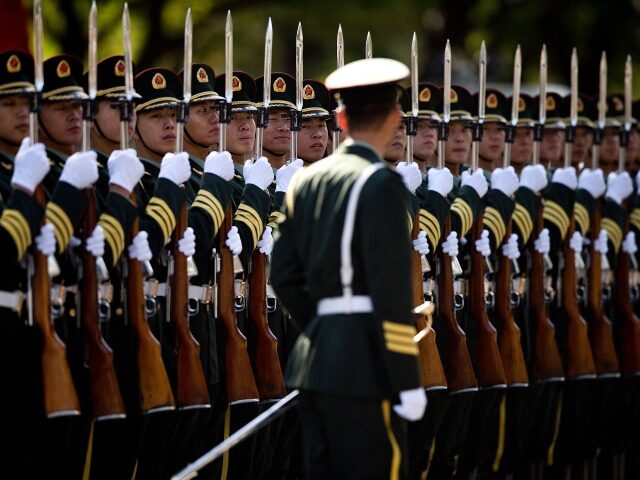India Today reported on Tuesday a troubling surge of Chinese troops to the Doklam region, where a deadly hand-to-hand battle was fought between Indian and Chinese troops in 2017.
The Indian military is concerned that the Chinese People’s Liberation Army (PLA) has effectively built a small city for its armed forces in the Amo Chu river valley, setting up another attempt to seize the Doklam plateau.
Meanwhile, China is growing increasingly belligerent against Indian efforts to develop its Arunachal Pradesh border province, which China claims under the name “Zangnan” as a southern district of occupied Tibet.
The PLA has not given up on Doklam, despite reaching deconfliction agreements with India after several border brawls. Both sides have traditionally kept their border guards unarmed to avoid military escalation, so skirmishes are fought with bare hands and improvised weapons, with a considerable number of serious and fatal injuries.
India Today published photos that depicted a large, permanent PLA military camp in the Amo Chu valley, featuring dozens of sizable barracks buildings. Also troubling to India are recent statements by its regional security partner, Bhutan, that suggested the Chinese have reasonable claims to parts of the Doklam plateau, and the Bhutanese might be losing their enthusiasm for holding the PLA at bay.
Some Indian observers are reportedly worried that Bhutan might be “willing to hand over to China territories it has lost on its western frontier in an effort to retain areas in the north.”
China is also pressing India hard in Arunachal Pradesh, which was the scene of a border brawl in December. India reportedly outmaneuvered and defeated the PLA invasion force in Arunachal Pradesh with assistance from U.S. satellite intelligence.
Indian Home Minister Amit Shah visited Arunachal Pradesh on Monday to launch a $585 million “Vibrant Villages” development plan, which will focus on adding new homes and infrastructure to border towns. The plan is intended to make these towns more livable by providing better services, creating jobs, and connecting them to the Internet.
Shah praised Indian troops deployed to the region for ensuring that “no one can eye our borders.”
“Today we proudly say, gone are the days when anyone could encroach on our territory,” he said.
The Chinese Foreign Ministry responded with outrage, referring to Arunachal Pradesh by Beijing’s preferred name “Zangnan” and insisting it is “China’s territory.”
“The Indian official’s visit to Zangnan violates China’s territorial sovereignty, and is not conducive to the peace and tranquility of the border situation,” said Chinese Foreign Minister Wang Wenbin.
The Indian Ministry of External Affairs dismissed China’s criticism.
“We completely reject the comments made by the Chinese official spokesperson. Indian leaders routinely travel to the State of Arunachal Pradesh as they do to any other State of India,” External Affairs spokesman Arindam Bagchi said on Tuesday.
“Arunachal Pradesh was, is and will always remain an integral and inalienable part of India. Objecting to such visits does not stand to reason and will not change the above reality,” Bagchi said.

COMMENTS
Please let us know if you're having issues with commenting.